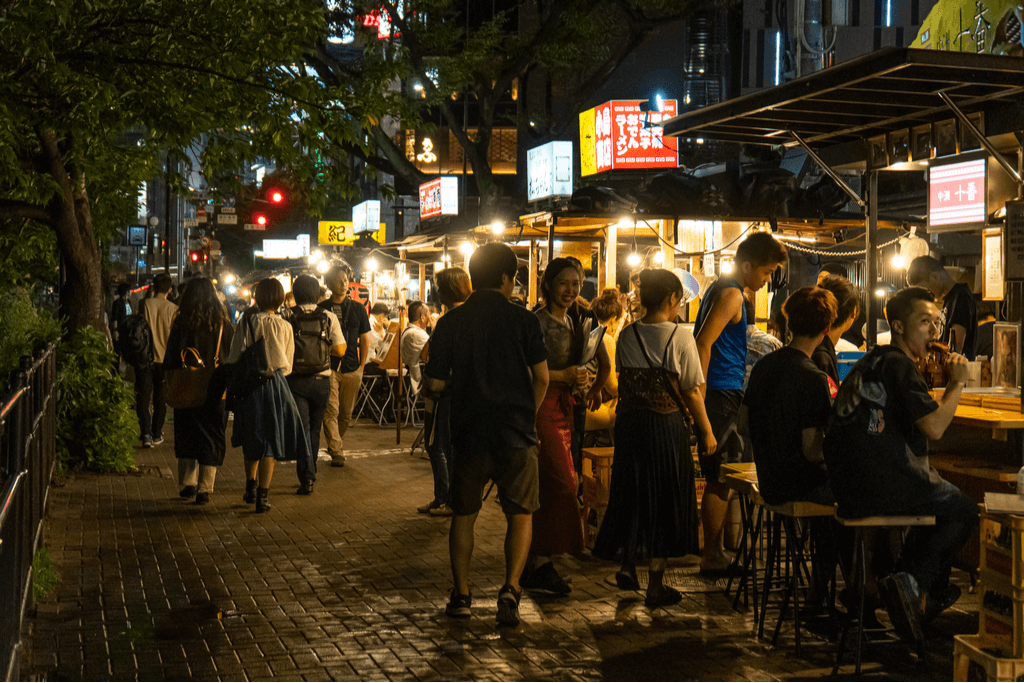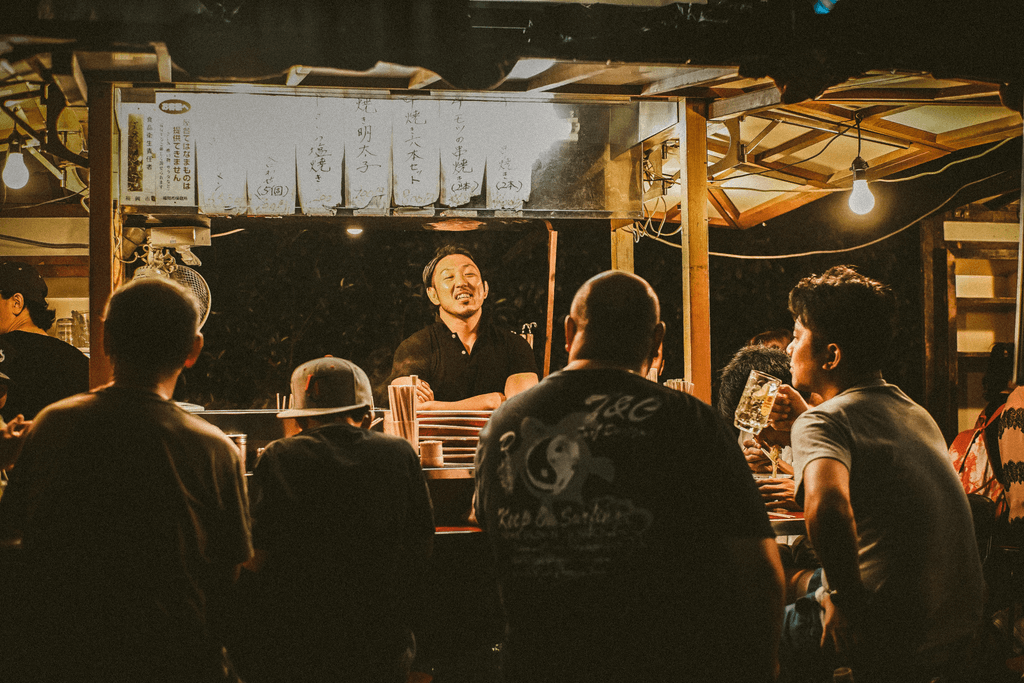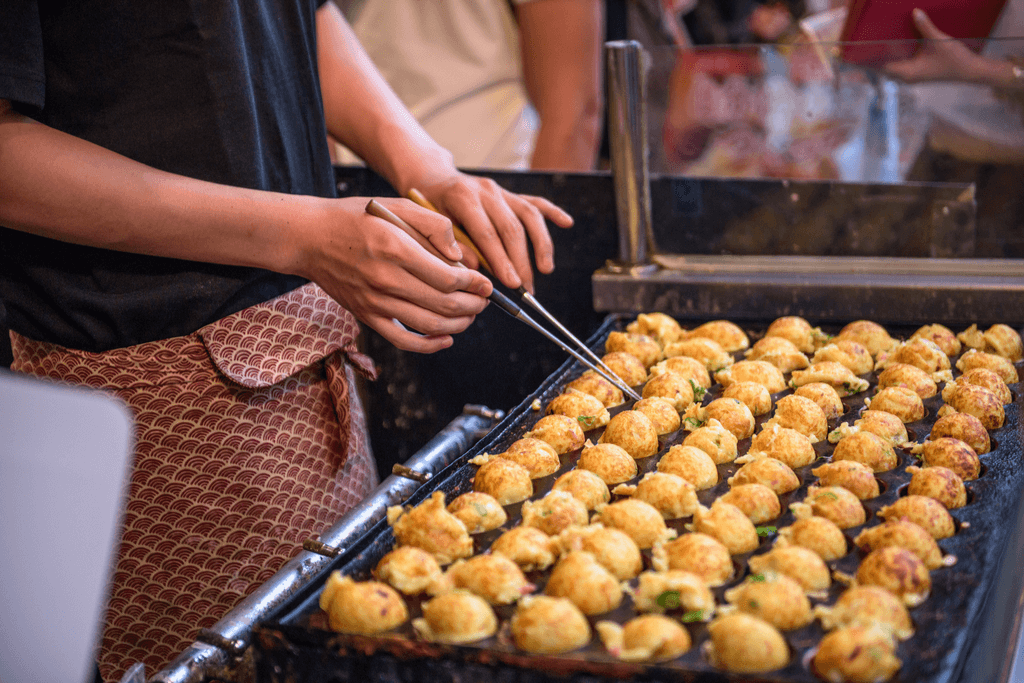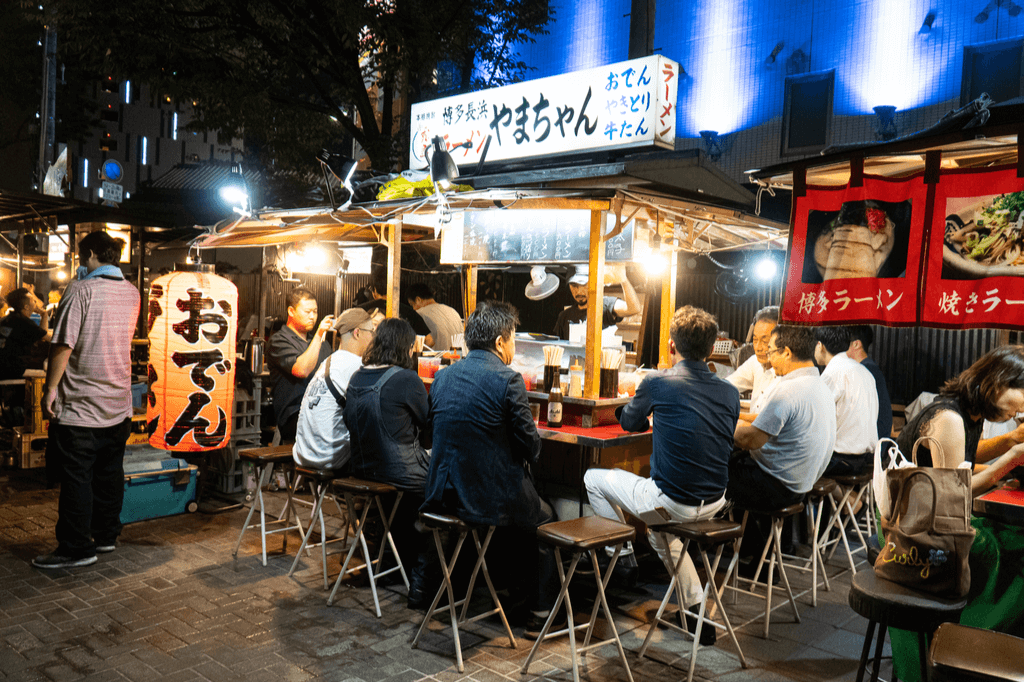Japan is well known for preserving its traditional culture. Even today, there are some hard-working people who make a living by cooking and serving customers out of a yatai or a traditional Japanese food stall. Allow us to introduce you to the incredible world of historical Japanese street vendors!
Table of Contents
ToggleWhat Are Yatai?
Yatai can be literally translated as “shop stand,” and the name pretty much speaks for itself. They are usually traditional, portable food stalls on wheels that function as an all-in-one mobile kitchen and eight-person counter table. They are traditionally made of wood and have a noren (fabric divider) to both advertise their food and to separate the customer from the outside.
When it rains or if the weather gets too cold, there will be a plastic barrier wrapped around the dining area to keep the warmth in. While ‘yatai’ refers to the wooden cart itself, many vendors usually set up a larger cooking area, along with coolers for ingredients and drinks, that otherwise wouldn’t fit within the cramped space.
Vendors can serve a variety of food, usually traditional Japanese cuisine like ramen, yakitori (grilled chicken skewers), gyoza (Japanese dumplings), oden (Japanese hot pot soup), and other fried foods. Many yatai will often serve alcohol along with their food, making their carts popular among Japanese salarymen and tourists alike. Yatai owners usually start around early evening, pulling their cart through pedestrian traffic to their usual spot and begin to set up shop.
Due to their unique properties, these Japanese street vendors offer a one-of-a-kind dining experience for all of their customers.
Want to experience a taste of Japan without having to go to a yatai? Give Sakuraco a try! Sakuraco sends authentic Japanese sweets, snacks, teas, and tableware from local Japanese makers all the way to your front door, so that you can experience true Japan at home!
When Did It All Begin?
The Rise
Edo, name for modern-day Tokyo, was once crowded with many single male laborers. As many of them were unable to cook, there was a large demand for eating out, leading to an increase of restaurants selling boiled or grilled dishes. From these restaurants came street food stalls, bearing the name of the restaurant and transporting the food to the customers. As a result, yatai were created because of a need for quick food.
Food that could be served quickly, like nigiri sushi (sushi over rice), soba (thin buckwheat noodles), and tempura (various fried foods), were often found at yatai. Oden and yakitori soon followed, and the charm and allure of the stalls quickly spread around town, becoming one of the world’s first fast food concepts.

The Fall
Around the Meiji Period (1868-1912), yatai gained a poor reputation, seen as contributing to the erasure of traditional Japanese food culture, especially in terms of the freshness of their in-store products. However, the need to satisfy one’s hunger often took care of these insecurities.
They were also often run by immigrants from then-occupied colonies, like Taiwan and Korea, and were often seen as a way for people from low economic status to rise up.
However, Yatai also became a part of Japan’s rebuilding after World War II. During the American occupation, many citizens were unable to feed themselves with government sanctioned rations.
With no other choice, they turned to the black market where many yatai operated illegally, using American-provided wheat as their main ingredient and popularizing many of Japan’s wheat-based foods, like ramen, soba, takoyaki (grilled octopus balls), okonomiyaki (a savory pancake), and yakisoba (Japanese fried noodles).
At this time, gyoza also started to become popular with garlic starring as the key ingredient, supposedly bringing about heartiness and strength.
The Revival
As Japan’s economy began to recover, many yatai began to transform their businesses, taking it from the streets and into the shops. However, with the 1964 Tokyo Olympics slowly coming up, the Japanese government created new regulations to create a cleaner image than the one that limited the growth of yatai culture. Since then, the number of yatai has significantly decreased.
Yatai in Popular Culture

Yatai have often been romanticized in manga, anime, and Japanese dramas or movies. They might be manned by a wizened elderly man who gives out occasional tidbits of wisdom, or be run by young, enthusiastic cooks hoping to change the world with their cuisine. Either way, every yatai is always portrayed with delicious and hearty food, like ramen or oden.
Recently, there have been new YouTube channels popping up featuring many different yatai from around the country, hoping to bring more attention to this important part of Japanese culture.
Where Can You Find One?
Nowadays, it has become harder to find these Japanese street vendors. Although a few of them still exist in major cities in Japan, the best place to find them is in Fukuoka city around the Nakasu and Tenjin districts. In Fukuoka, the yatai are still plentiful thanks to vendors organizing a trade association to protect their business.
Each night, dozens of yatai set up shop along the riverside, serving thousands of hungry customers. Although these yatai seem portable, they actually have set locations where they can set up shop. Most of these yatai have operated out of the same location for years, acting just like a regular restaurant, albeit one with a certain charm.
What and How Do You Eat There?
One of the most common staples of yatai food is ramen, specifically tonkotsu ramen (ramen with a pork bone broth) or Hakata ramen, which is famous in the Kyushu region of Japan. Many owners will cook the noodles to order while keeping the delicious broth ready at a low simmer for their customers.
Other offerings might include yakitori, yakisoba, and other Japanese festival foods. This is often because yatai serve up a storm at many Japanese festivals! Many stalls will have their main offering advertised on their noren curtain or on the warm, red lanterns as a way to tell festival goers what they can get.
If someone is looking to spend a night out hopping from yatai to yatai, it is customary for diners to spend between half an hour to an hour at one stop before moving onto the next. Some yatai even have English menus to cater to foreign tourists, and the owners will always do their best to make you feel welcomed.

The Future of Yatai
Although yatai owners in Fukuoka were able to create a trade association to protect them from the reforms that took place before the 1964 Olympics, their number within the city has continued to drop because, until recently, there were no new licenses issued to operate yatai.
This was thanks to a strict regulation that prevented new licenses from being made, only allowing descendants and family of current holders to inherit current licenses. The regulation also forced yatai owners to rely on their food stall as their sole source of income, preventing them from running the business as a part-time gig.
However, Fukuoka began to realize that the loss of the food vendor scene would be bad for local tourism and has started to improve on the situation, providing support and issuing new licenses to would-be vendors.
Today, these Japanese street vendors no longer serve just traditional Japanese food. Many of them are pushing the limits, serving motsunabe (hotpot made with intestines), teppanyaki (meat grilled on an iron plate), and even Italian pizza, French cuisine, and Okinawan cuisine. There is even a yatai that serves only cocktails (and mocktails, for those unable to drink) that are simply delicious!
Have you ever eaten at a yatai before? What did you eat? Tell us about your experience in the comments below!











3 Responses
Eating hot and fresh takoyaki sounds delicious. I hope to try it one day myself.
It is! I hope you can visit Japan soon and try it yourself, Henry! 😊
Ten days in japan, I could not find the yatai…
Would try again in next visit